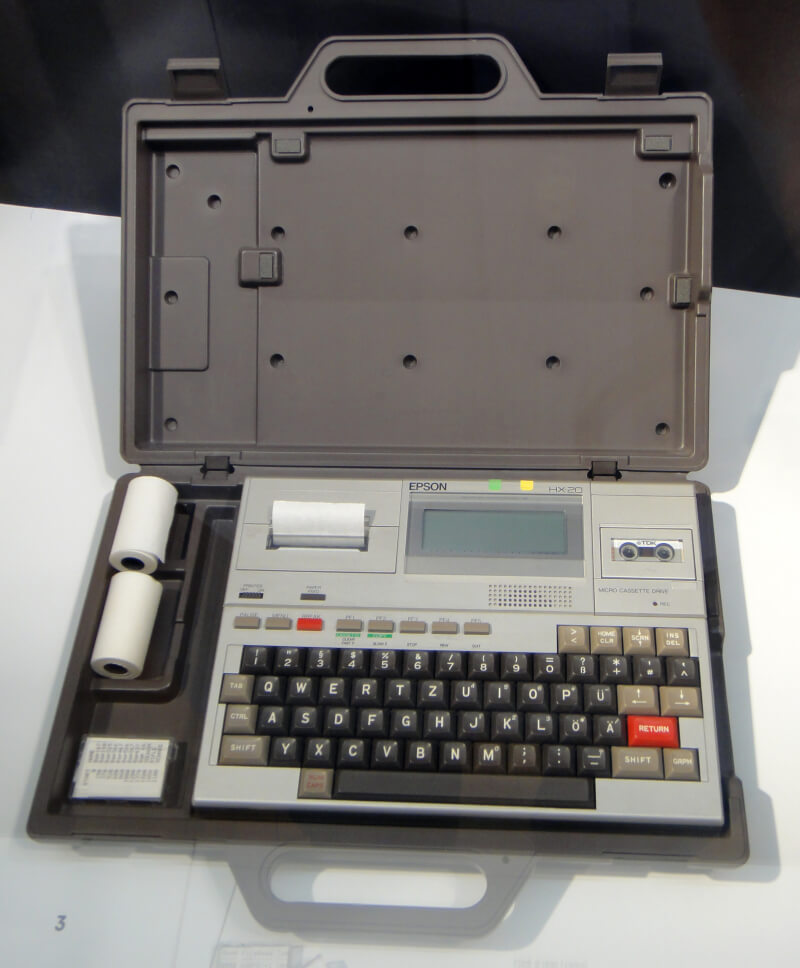And now, for some context

Regarded as one of the earliest portable computers – and perhaps the first true "notebook" PC – the Epson HX-20 was announced in November 1981 and released in 1982, with a starting price of $795. This was a remarkable value, considering that even a microcassette drive at the time could easily cost over $100 on its own.
The HX-20 featured a built-in 120x32-pixel LCD screen, driven by six µPD7227 controller ICs, each handling a 40x16 pixel segment. It ran a proprietary operating system that included the EPSON BASIC interpreter and a monitor program, allowing users to write and execute simple programs directly on the device.
Notably, the HX-20 came equipped with several innovative features for its time: a built-in microcassette drive for data storage, an integrated printer, a full-sized keyboard. Other oddities include a barcode reader connector, a 5-pin DIN connector for external expansion such as a floppy disk unit and display controller, and optional accessories such as an acoustic coupler for modem connectivity and an Augmentative Communication Device.
Despite its groundbreaking design, the HX-20 initially struggled in the market due to a lack of third-party software and accessories. As reported by Byte magazine in 1983, it remained relatively unpopular during its first year or two. By the time sales started picking up, rivals such as the TRS-80 Model 100 had been inspired to deliver offerings of their own and that particular Tandy model came with a far superior 240x64, 8-line LCD.
If you come across an HX-20 today, you might find that its original Ni-Cd battery has long since died. Fortunately, it can be replaced with a modern NiMH battery or even a holder for four AA cells. This kind of modification typically doesn't diminish the machine's collectible value, making it a practical and nostalgic piece of computing history.